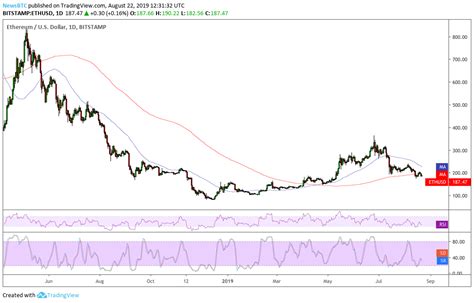Ethereum: a beginner’s guide on the Bitcoin graphic
As passionate about Ethereum, it is essential to understand the basics of the cryptocurrency market. A crucial aspect is to study graphics, which can provide valuable information on the performance of a room. Today, we will immerse ourselves in the world of Ethereum paintings and explore what each component represents.
The basic preview
Ethereum (ETH) is an open source blockchain platform that allows the creation of decentralized applications (DAPP). The cryptocurrency has gained popularity over the years, with its soaring price in recent months. As such, investors are always looking for graphics and indicators to assess the feeling of the market.
The Bitcoin painting: a comparative perspective
Before diving into Ethereum, it is essential to familiarize yourself with the Bitcoin graph (BTC). The Bitcoin graph is used as a comparative guide to analyze the performance of other cryptocurrencies like Ethereum. Here is what each bar represents on the graph:
* Highs and lows : These bars represent the upwards and the stockings of the cryptocurrency.
+ High: The highest point reached by the medal during its upward trend.
+ Low: the lowest point reached by the room during its downward trend.
* Support and resistance levels : These lines are crucial to determine whether a price movement will be maintained or reversed. Support levels represent areas where buyers have accumulated, while resistance levels represent the domains where sellers have pushed prices.
* Trendy lines : The trend lines follow the direction of the price movements of the underlying assets. They can help identify trends and predict future price changes.
Components of the Ethereum graph
Now that you know the components of the Bitcoin graphic, let’s go to Ethereum:
- Cougies : The candles of an Ethereum table represent the fence prices for each period (for example, day, hour, minute). Each candle has a unique color:
*
Green represents an upward trend.
*
Red represents a downward trend.
*
Black does not indicate any price change (intraday).
- Bars : The bars of an Ethereum table represent the volume of trading for each period. Each bar generally consists of three sections:
* Body : The main body of the bar, representing the negotiated amount.
* Wick 1
: The first part of the bar, from the opening price and ending at low / low.
* Wick 2 : The second part of the bar, from the top / high.
- Stochastic oscillator

: This indicator helps to identify the conditions of overcout or occurrence. It consists of two lines:
*
Signal line (Mobile average at 14 periods): a higher line / less than 50% shows a bull / lowering signal.
*
Crossover (Mobile average at 8 periods): the crossing between the signal and the resistance levels indicates an opportunity for purchase / potential sale.
Yellow line
The yellow line represents the relative (RSI)
, which is a momentum indicator. A higher RSI value generally indicates over -racket conditions, while a lower value suggests superventing conditions.
- 50: average price level.
- 70-80: Excessive condition (purchase).
- 30-50: neutral condition (balance).
- 0-30: occurrence condition (sale).
Green and red bits
These two colors represent the mobile averages **:
- Green: the short -term mobile average (generally 50 periods) is greater than the longer -term mobile average (generally 200 periods).
+ Raising trend.
- Red: The short -term mobile average is lower than the long -term mobile average.
+ Downward trend.
In conclusion, understanding Ethereum cards and their components can help you make informed investment decisions. By studying these graphics, you will be better equipped to navigate the cryptocurrency market and identify the potential profit possibilities.

